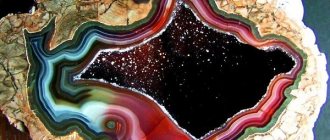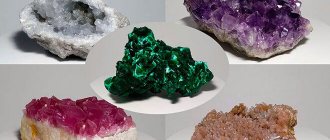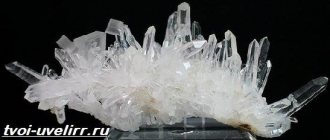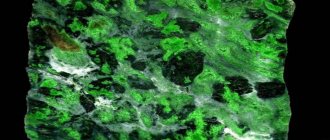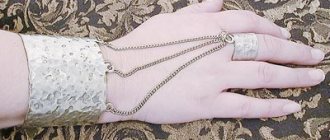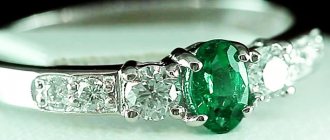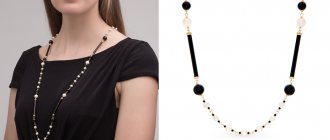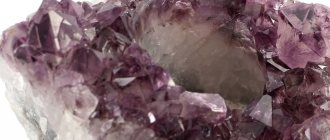During the natural processes of formation of the earth's crust or rock formations, spherical cavities are formed. In scientific language they are called geodes (from the Greek “geoda” - similar to earth).
In mineral mines, the internal cavity of the geode is filled with layers or crystals of gems, for which such formations are valued by jewelers and collectors.
What is a geode
For a geologist or mineralogist, a geode is a closed cavity in a rock filled with a mineral.
The name comes from the ancient Greek γεοειδής - spherical, similar to Gaia-Earth. Pronounced in the French manner (geode instead of geode).
The structure of a geode depends on the method of formation. But it is always a durable shell with a “filling” of layers or crystals. Or a combination of both: a layered shell with crystals in the center.
Geode formation
A geode can form quite quickly. This occurs when crystals grow rapidly inside a closed space, often cavities in the array.
The minerals inside such formations do not necessarily become crystals; sometimes they are deposited on the walls of the nodule, building up layer by layer. Such finds look very beautiful in cross-section.
Voids, of course, are not only made of amethyst; they are very different in their composition. Mineral deposits in bubbles and cracks in earth rocks occur due to proximity to hydrothermal vents. And, if in ancient times Pliny described formations with clay inside, then in our time mineralogists value nodules with crystals.
Underground water with minerals dissolved inside, getting inside the air bubble, gradually dries out, due to which the concentration of salts increases, and the crystallization process begins.
Structure of nodules
Typically a relatively small geode (2-30 cm) has the shape of a flattened sphere. Such formations often occur in rocks of sedimentary origin, such as limestone.
The outside of the amethyst geode has a thin bark that may have gaps in it, but it is strong enough to hold its shape. The outer crust is composed of silica.
It is therefore not surprising that the crystals inside are most often some type of quartz. Often this is amethyst, chrysoprase, white or rose quartz, etc. Chalcedony or agate nodules are also found.
Where do they come from
There are several ways to form a geode in nature. Basically the algorithm looks like this:
- Volcanic eruptions lead to the formation of mountains, cracks or cavities in the earth's crust.
- it is a durable but creaky design. Water enters through cracks, leaving a sediment of mineral salts.
- When the mineral saturation of the sediment reaches a critical level (after decades or centuries), the process of crystallization begins.
- In mine workings, the top layer of such concretions is quartz, agate, silica, chalcedony, and chrysoprase. They are filled with precious stones. They grow in layers or in the form of crystals, occupying the entire internal space.
Geode fragments are found at the bottom of the ocean.
Total information
Scientists call geodes any voids in natural massifs, the walls of which are covered from the inside with crystals of minerals, regardless of their size and shape.
The crust of the geode is strong and hard, there is emptiness inside it, and on the walls there are minerals in the form of crystals of semi-precious stones. Geodes differ from each other not only in their “filler”, but also in size, some of them are small, about 1 centimeter in diameter, others are large, more than a meter in diameter. Small geodes are called tonsils, large geodes are called caves. The most common sizes of geodes found in the rock are from 2 to 30 centimeters in diameter.
Large geodes are rarely found; their dimensions can be such that an adult can fit in them; such specimens are given personal names.
How to mine
There is not a single deposit of geodes on the planet; these raw materials are whole.
Industrial mining is excluded, since the share of individual miners remains. Almost always these are stone lovers or people who want to make money by selling rare specimens.
Over the course of months or years, they manually sift rock from waste or abandoned quarries along river banks.
Science or geological instruments cannot help in this matter. You have to rely on personal experience and talent. Instead of precious crystals, there may be clay or something similar inside.
Geode structure
The ancient Roman scientist Pliny wrote about geodes as stone containers filled with clay, but other substances in the form of fused crystals - druses (brushes) can also act as filler. The German word “Druse” is translated into Russian as “brush”.
The crystals are in the geode in great cramped conditions and disorder, or, conversely, free and lonely. They can grow without any system, or in a certain direction, most often reaching towards the center. In this case, the central part of the geode may remain empty, or the crystals form a mineral monolith there. Due to the chaotic arrangement of the crystals, the intergrowths are called brushes; the crystals in them are arranged as freely and in different directions as the bristles in a brush.
Mineralogists believe that two crystals growing on the same base can already be called a brush. The size of the crystals in druses is usually very small, only a few millimeters, but due to their large number, in general, the brush has a very attractive appearance.
Geodes are formed due to the natural growth of crystals in a space closed on all sides by rock. Minerals accumulate in them gradually, sometimes the process occurs with crystallization, sometimes they remain a coating with layers of gems. Such specimens look the most interesting and attractive.
Sometimes substances brought there by groundwater settle in geodes. These substances were once dissolved in water, but after entering the geode, the water left, leaving a sediment on the walls of the sphere - compounds of silicon, calcium, and other chemicals.
The outer part of the geode consists of silicon dioxide and its polymorphic modifications - quartz, chalcedony, chrysoprase, agate. Despite the small thickness of the walls, the “product” turned out to be strong enough to hold both its shape and contents.
Agate care
Agate jewelry requires careful care. This stone is not particularly fragile, but it may well break if dropped even from a small height. However, not only falls can ruin a talisman.
Owners of the gem need to remember:
- The stone does not like direct sunlight. Do not leave it on a windowsill or in the yard in the sun, otherwise it will lose its rich color and become faded.
- Agate products are polished so they look smooth. Because of this, figurines and decorations become very dirty. But do not rush to wash them with aggressive detergents - use mild hand soap.
Whether it’s dishes made of agate or jewelry, all products made from this mineral require special care.
The stone is capable of containing all the bad things that were intended for its owner. This means that it is better not to store it in a box with other jewelry so that negative energy does not transfer to them. Find a separate “house” for your amulet and do not forget to clean it at least several times a month.
Precious geodes
Not all geodes attract collectors and jewelers, but only those filled with gem crystals. They end up in museums, private collections and jewelry workshops, where they are used to make original jewelry. Geodes with amethyst crystals are most prized.
Large specimens - caves - remain in the area where they were mined as a natural attraction. Thus, in museums in Uruguay and Brazil you can see geodes that can comfortably fit an adult. They create such interesting compositions from them:
In Russia, geodes with agate, chalcedony, hematite, and amethyst are most often found; they look quite beautiful both in jewelry and in various compositions. In the Urals, geodes are called “gnarly”; here, specimens with rock crystal inside are most often found.
In Africa and Asia there are geodes with celestite, in the Alps - with calcite crystals. In the USA - with azurite.
Geodes are not only mined industrially; unusual gifts of nature are hunted by amateurs for whom communication with nature and collecting crystals is an exciting hobby that can bring considerable income. In Russia, a small geode measuring 5-7 cm with gray agate costs about 3 thousand rubles.
They check old workings and small abandoned mines using hand tools. Often luck really smiles on them, and lovers find geodes with multi-colored citrines, amethysts, rauch topazes, and rock crystal.
Where are they found
You can find surveying where minerals are or were once mined. Particularly precious or semi-precious colored stones.
In Russia, their placers are concentrated in the Urals. Geodesists here mainly mine quartz geodes. The “cones” (as geodes are called in the Urals) are filled with rock crystal, agates, amethysts, chalcedony, and hematite.
Celestine geodesic minerals, fluorite, malachite, aragonite, amethyst
Beautiful large specimens were brought from Southeast Asia, Australia, Sri Lanka, and India.
Amethyst geodes for human growth belong to Uruguay and Brazil.
Types of geodes
Voids that occur within sedimentary rocks are located in nodules. A concretion is a round formation resulting from the growth of crystals.
Crystallization is not always uniform, so not every nodule has a spherical shape, but all of them have a radial structure. A geode occurs as a consequence of changes in the crystals within the nodules.
There are also geode voids of recrystallization. This happens when the already grown crystals dissolve again, the crystallization process starts again. But, since the concentration of minerals is no longer so high, and the impurities washed out by groundwater are not renewed, a void gradually forms in the enclosed space of the nodule.
Limonite geode is also not uncommon. This formation occurs due to the oxidation of iron ore rocks found in nodules.
Quartz nodules are often found in limestone and chalk rocks. Geodes filled with precious stones are often found in them. Of course, such finds are of particular interest to gem lovers. Precious crystals of amethyst and other stones often form druses.
Metasomatic geode objects arise due to the incomplete replacement of some mineral formations by others. They do not represent any jewelry or aesthetic value, but are very important for scientific research. Such a geode helps to better understand the processes that occur in sedimentary rocks.
Education mechanism
A popular division depending on the method of formation:
- Metasomatism. One mineral is partially replaced inside the cavity by another. It is of interest to scientists as a marker of processes occurring in the deep layers of the earth’s crust.
- Recrystallization. Natural disasters trigger the process of destruction of already formed crystals. Thermal waters wash out impurities from this viscous mass. The “pure” residue begins to crystallize again. The result is a transparent filling, without inclusions, cloudiness or other flaws.
The latter variety is especially valued by jewelers.
Compound
The species is determined by the main mineral in the composition:
- Limonite. Formed in iron ores. Water, filling cavities or cracks, oxidizes them, forming “geodes”.
- Silica. Found in limestone cavities. More often, a druse of quartz is hidden inside.
- Ferromanganese. Formed on the sea or ocean floor.
A special type is simbircite geodes. These are fossilized shells of ammonite mollusks that became extinct millions of years ago (which is why geodes are often called ammonite). Filled with marble simbircite or pyrite.
Dimensions
Geode dimensions are generally average – from a few to a couple of tens of centimeters.
The smallest (up to 1 cm) are called tonsils, the largest are called caves. "Caves" can exceed human height.
Color
The color is determined by the composition of the base minerals.
Thus, the often found amethyst geode has a rich purple hue, while specimens with citrine are yellow-green.
Agate samples are not crystalline and are identified by alternating reddish-brown and white-gray or blue and pink layers.
Form
In nature there are fragments of different shapes. Most often these are oblate spheroids.
The rarest but most valuable is the correct sphere.
Description and properties
Agate is a semi-precious stone, quartz chalcedony. Specimens are transparent or translucent with shades ranging from white to brown. It can be monochrome, ribbon-like or banded-layered in structure, with spotted or eye-shaped inclusions. They are formed by organic remains: fossilized shells of mollusks, trees, scientifically poetically designated as pseudomorphs.
All types of agate are resistant to acid.
The name of the stone is interpreted in two ways:
- Derived from the name of the Achates River on the island of Sicily, where it was first discovered;
- From Greek - kind, happy.
The agate stone is one of 12 on the breastplate of the high priest of Judah. It is believed that the powerful Holy Grail was carved from it. The object of worship is a two-meter black agate statue of Buddha. The Hermitage is proud of its 20,000-strong collection of cameos made from this gem.
Gemstone nodules
Minerals and crystals: celestine geode, fluorite, malachite, aragonite, amethyst.
Voids with precious druses are the most valuable. They are used both in jewelry and as museum exhibits. Amethyst geodes and druses are very popular. The largest formations, which can easily accommodate a person, are left where they were discovered and are tourist sites.
Geode voids of enormous size, larger than human height, are exhibits in Brazilian and Uruguayan museums. It is in these countries that the largest amethyst deposits are concentrated. Small tonsils are set in gold and silver and sold as jewelry.
Education mechanism
Most often, geodes form in sedimentary rocks or limestone. This is due to the mechanism of their formation:
- Under the influence of volcanic processes, cracks or cavities of rounded shapes constantly form in the bowels of the earth. The outer wall of such nodules may consist of silica, quartz, chalcedony, agate or chrysoprase.
- The structure is durable, but has small cracks.
- Groundwater flowing through such a cavity leaves a sediment of mineral salts.
- When a high concentration of minerals in the sediment is reached, crystallization begins.
- The large free space of the geode does not prevent the growth of crystals until they completely fill it.
The amethyst geode is especially famous for its beauty, from which both figurines and jewelry are made in Brazil and Uruguay. Due to the largest reserves of amethyst, geodes larger than a man are also found there.
How are geodes mined?
A geode with crystallized amethysts or other gems inside is a highly valuable object that is especially coveted by mineral and gemstone collectors.
Geodes are not mined on an industrial scale, as is the case with regular gemstones. Such semi-precious voids are often deliberately sought by scientists or simply hobbyists who are passionate about their work.
At the same time, experienced specialists check not only new discovered deposits, but also old mines at any depth. The search for precious formations occurs virtually by hand and by touch.
The only thing you can rely on here is intuition, and not geological exploration knowledge. The seeker relies only on luck and his own experience in searching for nodules.
Properties of agate for women
This natural mineral is great for expectant mothers. It relieves stress and tension, affects not only the woman, but also her child. The stone also prolongs youth and beauty. In the sphere of relationships, agate has a positive effect on all connections: with parents, husband and children, friends. It increases the level of mutual understanding.
Women often experience mood swings. The gem helps you cope with this and always be in a pleasant mood.
It is not recommended for girls to wear such jewelry on themselves all the time - they must be removed at night. Once every 1-2 months, the mineral is washed and left overnight near a window under moonlight.
Quartz geodes - frozen beauty and magic of nature
Quartz is an amazing mineral that has attracted people's interest since its discovery. And this is not surprising, because it comes in a variety of colors and has the most amazing properties. Beautiful, unique and simply magical stone!
Geodes - frozen beauty of nature
Geodes are spherical, oval, round formations in rocks, the inner walls of which are filled with crystals. Their sizes can vary: from a few millimeters (in which case they are called tonsils) to more than 1 meter in diameter (in which case they are called caves).
To buy a figurine, click on the photo
The most amazing are geodes, which contain quartz crystals inside. Like caves with countless treasures!
Empress of Uruguay - the largest geode in the world
The photo below shows a geode with amethyst crystals (a type of quartz). It's called "The Empress of Uruguay." This is the largest geode in the world! Its height is 3.27 meters and it weighs 2.5 tons. The geode is located in the Atherton Crystal Caves Complex Museum, 50 kilometers west of Cairns, Australia.
A stunning picture, you must agree. Like a portal to the world of fairy tales and magic.
The magical properties of crystals and geodes
Geodes are more than just beautiful crystals. They are also endowed with unique magical properties. The unique inimitable shapes of these minerals fit perfectly into the interior. They become an original decoration of furniture.
According to Eastern teachings, a geode brings material well-being to a home and is the key to a happy future. There is an interesting sign. If you give a person 1 geode, it means you have found a friend in him. Giving 3 geodes helps to make a person fall in love with you with all your soul. 2 geodes are the golden mean, strengthening friendships and attracting happiness to the home of its owner. Also, a pair of geodes is a symbol of fertility.
To buy a figurine, click on the photo
Geode figurines, thanks to their shape, collect energy inside, passing through quartz crystals, it is purified, changed, structured and radiated back into space in its pure form, filling it with positive energy. It is also believed that geodes protect against negative influences and help avoid the serious consequences of damage and the evil eye. Even magicians and shamans use them in their practice to enhance their witchcraft abilities.
Quartz also has a positive effect on the respiratory system, easing the course of colds. Its crystals help attract love (rose quartz), luck and wealth into the home (yellow), help develop imagination and imagination, activate mental activity (green and smoky), protect against harmful cravings for alcohol (purple). Not a mineral, but just a treasure!
When you need an unusual gift
Looking for an unusual gift? Select a quartz geode figurine. Charged with your positive energy and good wishes, it will become a reliable protector and amulet, even if you yourself don’t believe in it.
Magic properties
Its volcanic origin endowed it with powerful energy. For centuries, healers and sorcerers considered the stone theirs. For Ancient Egypt, agate had the meaning of a fertility stone, for medieval Europe - prosperity and health, and guaranteed well-being for the Hindus.
Practicing magicians claim that today the magical properties of agate are also strong. Magic stone:
- protects from unnecessary purchases;
- returns the owner to reality, making a pragmatist out of a dreamer;
- helps to understand the situation, suggests which path to new achievements to prefer;
- protects psychologically weak people from energy vampirism; strong ones are suitable for spiritual growth;
- develops self-confidence and the ability to clearly express thoughts;
- forces you to take action and make decisions;
- in the event of the collapse of all hopes, it gives magical powers to start all over again.
A pebble in your hand will help you understand yourself, solve a problem, and if you put it on your desktop or near your computer, your work will be more effective. The magical properties of the stone make it a symbol of harmony and health of the body.
Price
Russian online stores offer an assortment to suit every taste and budget. When setting the price, the type of filling mineral matters.
For example, an agate sample (10x6x4 cm) can be bought for 2.9-3.1 thousand rubles. Amethyst of comparable dimensions is three times more expensive, and limonite-goethite-siderite will cost 300-350 rubles.
Amethyst Geode
Colors and styles
There is a fairly large number (more than 150) varieties of agate, which are differentiated, first of all, by the position of the stripes, color intensity, the presence of various inclusions, etc.
The most famous varieties of agate, which are highly popular among jewelers and artisans, are
- ocellar, which is characterized by a pattern that visually resembles an eye;
- moss, for which there are dendrite inclusions that are similar in appearance to moss;
- bastion, which is characterized by a multi-colored pattern, externally similar to the ruins of the castle in silhouette;
- black agate, also called magic agate;
- frosty;
- tortoiseshell;
- etc.
The most accessible types of agate are:
| Name | Description |
| green | this color is obtained due to the content of chloride in its composition in a sufficiently large amount; |
| yellow | this color is achieved mainly artificially due to the action of iron oxide; |
| white (milky) | the unique pattern in this type of stone is achieved due to the intersection of fibers of a darker color perpendicularly; |
| black | Not just black varieties are quite common, but stone variants containing borax, sulfur, and other paints |
How to care
Almost always, geode samples are represented by polished sections in collection material or the same inserts of jewelry.
You need to care for them in the same way as the pebbles collected inside:
- For example, protect amethysts from the sun, in which they fade.
- Remove dirt only with a damp cloth, using baby soap if necessary. Never use ultrasound or steam.
- Products or decorations should be protected from falls and impacts so that the polished cut of the geode does not get damaged or the pebbles do not break.
If it is used as a magical artifact, it can be recharged. That is, expose it to moonlight or sunlight (but not full sun). This will attract wealth into the house.
What is a druse
A druse is an accreted aggregate of crystallized minerals (translated from German as “brush”). This name was given for the similarity of the shape of the crystals connected in a chaotic order in the cavity of the sphere with bristles.
The direction of the tops of the stones can also be oriented in one direction, then the nugget looks very impressive.
Even the fusion of just 2 gems together is equivalent to druses, and their size can be no more than a few millimeters.
Types of drusen
Based on the composition of the crystals and the base on which they rest, druses are classified as follows:
- Single-component. The formation of crystals occurs on a mineral of a similar composition. For example, lime spar stones grow on a base of the same spar, which has a granular structure.
- Multicomponent. The crystal is formed by one mineral, and the layer on which it is fixed is formed by another. Thus, quartz druse often forms on gold ore.
View this post on Instagram
Posted by Zhanara Serikkan (@art_serikkan) Jul 25, 2022 at 2:58 PDT
By form:
- Straight when the base has no irregularities.
- Curved, as in spherical cavities.
- A drusen is called a flower when the crystals grow from the center to the periphery of the cavity.
- A brush is a druse made up of small crystals growing in a vertical plane.
The size of a drusen can be either miniature - a few millimeters - or large.
Interesting! The largest druse is more than 2 m high and consists of rock crystal. Such an exhibit is kept in the Mining Museum of St. Petersburg.
Agate geode - what is it?
First of all, you should understand what a geode actually is.
Geode is a geological formation. It forms in sedimentary or volcanic rocks. This is a closed cavity, often having a rounded shape: circle, ellipse, sphere. But isometric formations are also often encountered. The basis of such formations is stalactites, kidney-shaped, ordinary stone.
An agate geode is a formation in which this very empty cavity is completely or partially filled with growths of the mineral, sometimes in several layers. Outwardly, such a formation may look like the most ordinary rock, but a cross-section reveals a simply indescribable picture.
In nature, it can form in different sizes - from miniature specimens to human-sized aggregates. The latter, of course, become the property of museums and exhibitions.
As for the shade of the mineral in such geodes, it is impossible to determine any specific color. There are growths of a wide variety of colors. It all depends on the amount and type of impurities. But the most valuable formations are geodes with several gems. For example, you can find an agate geode with rock crystal crystals. Soft shades of blue or purple agate and the light shine of crystal make such stones masterpieces of nature, because it is simply impossible to take your eyes off them, as if the whole Universe is opening up before you.
Despite the fact that natural agate geodes, which, as a rule, do not have a very saturated color, are considered the most valuable, this does not stop scientists from artificially tinting such finds. With the help of tinting, they are given a deeper color, clear transitions from one shade to another and more pronounced layering. If you doubt the naturalness of a stone, it is better to contact specialists in the field of gemology. Only with the help of special equipment can one determine whether man interfered in the creation of such an amazing gem.
Where and how are they used?
Samples with crystals are used by collectors, stone cutters and jewelers.
Preliminary processing
In order for the extracted sample to acquire interesting conditions, multi-stage processing is used:
- The outer layer of the shell is cleaned of plaque by immersing the fragment in a special composition.
- Then it is sawed. This is the most difficult stage. You need to choose a place so as not to damage the crystals and not to shift the center of gravity.
- The cut surface is leveled and polished.
When selling jewelry and collectibles, sparkly cuts are common.
Areas of application
Where the raw materials will be used depends on the size and type of “filling”:
- Jewelers cut almond crystal geodes with semiprecious stones in half and frame them with metal inserts.
- Medium and large samples are sent to collectors.
- Exceptional examples in every sense end up in museums.
However, each product is unique: the configuration or layering of the crystal is inherently non-duplicate.
Properties
The healing properties of agate geodes depend on the shade of the stone itself:
- White improves health, accelerates the healing process of soft tissues, as well as bone healing in case of fractures.
- Gray agates help get rid of heart disease, heal arthritis and other joint diseases.
- Blue strengthens the immune system, helps cure throat diseases, skin diseases (especially eczema). Helps get rid of stuttering and calms nerves.
- Brown has a beneficial effect on vision, prevents kidney disease, and normalizes the functioning of the digestive system.
- Yellow agate has an antipyretic effect on the body and normalizes body temperature.
- Pink is a protector against colds and frequent ARVI. It copes with prolonged cough and constant sore throats.
- A black agate geode treats complex disorders of the nervous system.
- Green strengthens the immune system, increases the level of hemoglobin in the blood, and removes toxins from the body.
As for other varieties of agate, for example, moss, eye, fire, landscape and others, it is important to determine which shade predominates in the stone, and only from this point of view to analyze its medicinal properties.
Geodes filled with crystalline agate druses are the most valuable not only for collectors, but also for magicians, psychics and hereditary sorcerers. Education is used as a tool in various magical rituals. With its help, they attract financial well-being, good luck in business and in their personal lives. In addition, if you have an agate geode at home as a talisman, then, regardless of the shade, it will help maintain mutual understanding in the family, avoid adultery, quarrels, scandals, and also protect your home from thieves and even fire.
Mystical properties of druzes
The magical properties of druse are determined by its composition.
For example, amethyst druse reduces anxiety, fights depression and loss of strength, frees a person’s thoughts from negativity and cleanses his living space of bad energy.
Agate geodes protect the owner from the influence of enemies, energy vampires. They are chosen if the work involves communicating with a large number of people. Suitable as a talisman for small children.
Crystal druses are considered stronger than a single stone, due to the preservation of their natural shape.
Large geodes concentrate a large amount of energy. It is believed that if you shout your wish into such a cavity, it will definitely come true.
Application
Given the not-so-small size of the agate geode, it is rarely used as an insert in jewelry. But this does not apply to those cases when the cavity is formed of very small sizes, which allow it to be inlaid into the cast of jewelry. As a rule, the stone is not processed, but is left in the form in which nature created it. The most common products:
- pendants;
- beads;
- bracelets;
- necklaces;
- massive earrings.
An agate geode, as a rule, becomes a very beautiful interior decoration, especially when it comes to a personal office, living room or bedroom.
How and where is agate mined?
Agate is a stone mined from volcanic and sedimentary rocks. Its deposits are located all over the world. The gem is mined on many continents, including Africa, South America, Europe, and Asia.
Among the countries in which the agate mineral is mined are:
- Germany;
- Brazil;
- India;
- Georgia;
- Armenia;
- Tajikistan;
- Mongolia;
- Russia.
If we talk about Russia, then the largest reserves there are in the Urals, Chukotka, and also in the Moscow region.
Adviсe
- You can also occasionally tap the stone to see if it is a geode. Geodes sound hollow because they have crystals inside.
- Take your surroundings seriously and never go mineral hunting, prospecting, or cave exploring alone. No stone is worth your life or safety.
Sources
- https://TheMaykl.ru/koldovstvo/zheoda-foto.html
- https://dr-webs.ru/kak-nayti-zheodu-v-reke/
- https://alloberegi.ru/kamni/zheoda/
- https://vericon.ru/vorozheya/zheoda-chto-eto-takoe.html
- https://ru.wikihow.com/%D0%BE%D0%BF%D1%80%D0%B5%D0%B4%D0%B5%D0%BB%D0%B8%D1%82%D1%8C -%D0%B7%D0%B0%D0%BA%D1%80%D1%8B%D1%82%D1%83%D1%8E-%D0%B6%D0%B5%D0%BE%D0%B4 %D1%83
- https://ru.yevgenykafelnikov.com/how-identify-an-unopened-geode
- https://stone-stream.ru/interesnoe/zheoda-foto.html
- https://kamenis.com/agat/zheoda-agata/
History of agate
There are several assumptions about the origin of agate stone. According to the first of them, the name was given by the Achates River, which flows through the territory of the island of Sicily. According to the second version, the name of the stone has Greek roots, where the word “agates” meant useful, happy, since agate has healing properties and helped its owner become happier in life.
Agate deposits were first discovered in the Stone Age in France. It became widespread in Egypt. And in general, judging by the decorations and figures found in the habitats of ancient civilizations, it was very popular.
As for the scientific description of agate, the first mention of it took place in the 4th century BC, when Theophrastus’ treatise “On Stones” was compiled. Jewelry made using agate has been repeatedly found in burials older than the period when the treatise was written.
